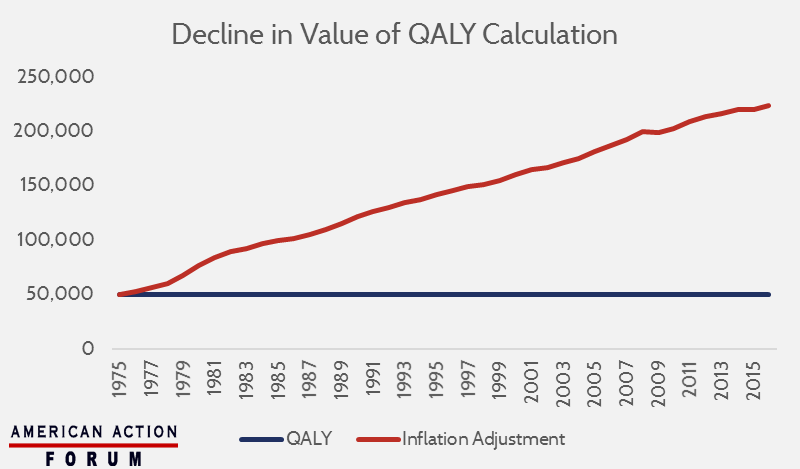Weekly Checkup
October 13, 2016
How Do We Measure “Quality?”
When determining the relative value of new treatments of disease, most industries implicitly or explicitly put a dollar-value on each additional year of quality life that a treatment may add. This calculation, referred to as Quality Adjusted Life Years (QALYs), has been used by pharmaceutical companies, insurers, and government health departments in the US and abroad (such as the UK’s National Health Service) for the past 40 years.[1]
The first widely-accepted QALY value for a new treatment was $50,000 per additional life-year. This $50,000 figure has been used consistently since 1975 without any updates to account for changed standards of living or inflation.[2] For this calculation to work, it would have to be adjusted to account for any number of variables among individuals and time periods. But adjusted for inflation alone, the often-used $50,000 QALY figure overvalues new treatments by up to 400 percent.[3] This discrepancy is just one indicator of the difficulties in accurately determining the value of a particular drug or treatment.
[1]https://www.researchgate.net/publication/5489212_What_Does_the_Value_of_Modern_Medicine_Say_About_the_50000_per_Quality-Adjusted_Life-Year_Decision_Rule; http://content.time.com/time/health/article/0,8599,1808049,00.html.
[2] http://content.healthaffairs.org/content/19/2/92.long.
[3] http://www.bls.gov/.











